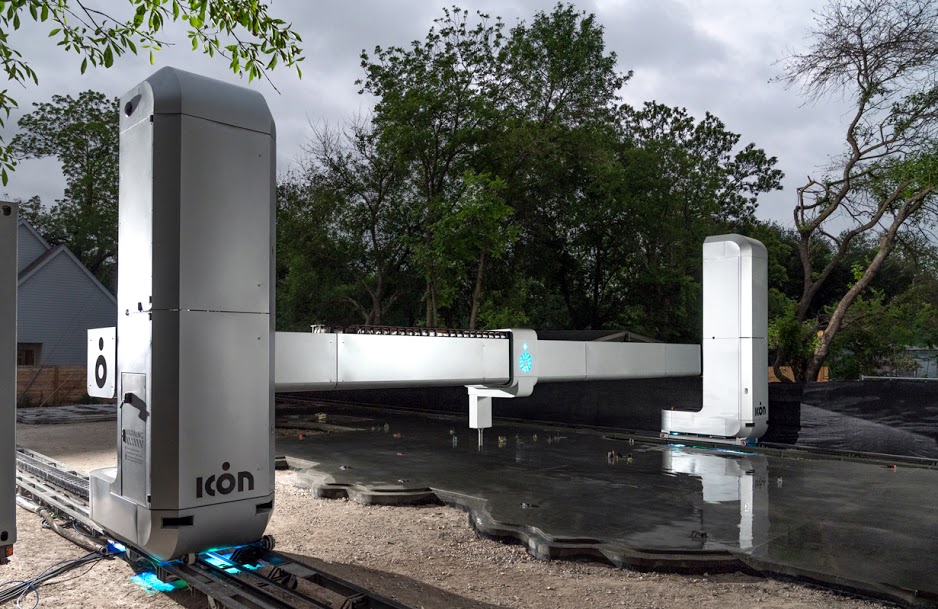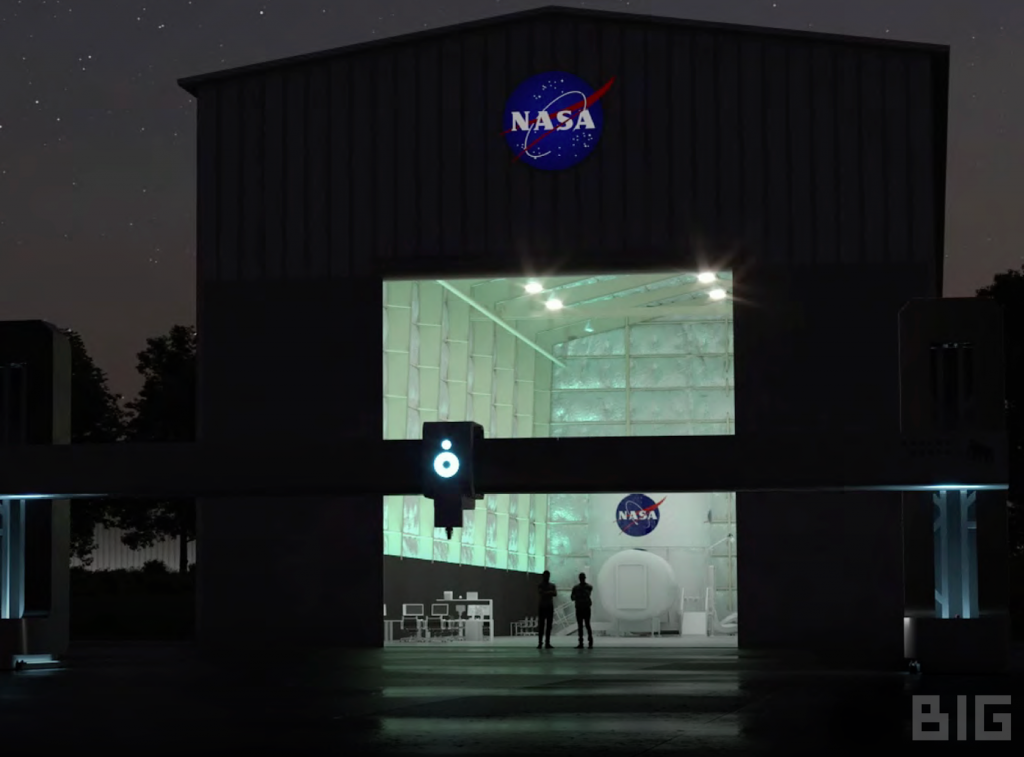The 3D Printing Industry Awards 2022 shortlists are now available for voting. Who will win the 2022 3DPI Awards? Have your say by casting your vote now.
Texas-based construction 3D printing firm ICON has gained a $57.2 million contract from NASA to develop an off-world construction system.
As part of a Phase III of NASA Small Business Innovation Research (SBIR) program, ICON has been awarded nearly $60 million to build upon its previous work as part Project Olympus. Thus far, this mission has seen the company work with architecture firms BIG and SEArch+ to develop a new machine that can 3D print permanent lunar structures from lunar regolith.
“To change the space exploration paradigm from ‘there and back again’ to ‘there to stay,’ we’re going to need robust, resilient, and broadly capable systems that can use the local resources of the Moon and other planetary bodies,” said ICON Co-founder Jason Ballard. “We’re pleased that our research and engineering to-date has demonstrated that such systems are indeed possible, and we look forward to now making that possibility a reality.”
“The final deliverable of this contract will be humanity’s first construction on another world, and that is going to be a pretty special achievement.”
ICON’s Vulcan 3D printing technology
ICON specializes in construction 3D printing, and more specifically, the development of its Vulcan 3D printer. Designed to enable the production of fully-fledged two-storey homes, the company’s 15′ x 46′-6″ system is capable of utilizing robotics, its BuildOS software and its proprietary Lavacrete material, to create large-format architecture with precision.
In the past, ICON has worked with non-profit organization New Story to deploy its technologies in the 3D printing of affordable housing for those in need. In May 2019, the company fabricated the ‘world’s first 3D printed community’ in Latin America, and since then, it has gone on to 3D print houses for low-income families in Mexico.
ICON has also committed to building a 3D printed housing complex in Austin. Designed alongside Lennar and the BIG-Bjarke Ingels Group, these homes were initially scheduled to ‘break ground’ this year. Elsewhere, the firm has worked with the Texas Military Department (TMD) to develop a 3D printed barracks as well, designed to house troops during training.

Progressing with Project Olympus
Set up with the aim of returning astronauts to the Moon by 2024, the Artemis Program has already deployed 3D printing in the development of rocket engines and a lunar lander. But with Project Olympus, NASA has sought to take its use of the technology a step further, by contracting ICON to develop a means of using it to build off-world structures.
In response, ICON has developed the ‘Olympus,’ a multi-purpose construction system designed to further NASA’s efforts to establish a presence on the Moon. While the firm has been part of the project for some time, it has now revealed that it intends to launch its hardware into space to see how it performs in zero gravity.
Alongside this gravity simulation flight, ICON says it also plans to work with lunar regolith samples brought back from Apollo missions to determine their mechanical behavior in simulated lunar gravity. According to the company, its research findings will yield results that “inform future lunar construction approaches,” including those related to landing pads, blast shields, roads, and other critical infrastructure.
More broadly, NASA says that through the Artemis program it hopes to develop off-Earth sites capable of enabling sustainable surface exploration. That said, ICON’s 3D printed lunar bases will ultimately need to provide thermal, radiation, and micrometeorite protection, while facilitating settlers’ efforts to ‘live off the land,’ in a way that furthers NASA’s efforts to make humanity a spacefaring civilization.

Regolith-based additive manufacturing
While using additive manufacturing to build structures on the Moon may sound more like something from a sci-fi movie than reality, the concept has already been in development for a number of years, with several countries engaged in R&D.
Russian space agency Roscosmos announced in 2019 that it aims to support long-term lunar missions by 3D printing structures from regolith. According to Roscosmos Chief Dmitry Rogozin, Russian cosmonauts will land on the Moon in 2030, and such technologies may then facilitate their long-term plans to stay on the lunar surface.
China’s National Space Administration (CNSA) also plans to be the first country to establish a base on the Moon. The CNSA’s plans for a 3D printed structure were announced following the successful landing of China’s Chang’e 4 module in 2019.
Elsewhere, the Technical University of Braunschweig and laser technology specialist Laser Zentrum Hannover e.V. (LZH), are working on turning moondust into a building material too. In their research, the team has suggested that a three-kilo laser melting machine could be mounted to a rover, and transported to the Moon as a portable manufacturing system.
To stay up to date with the latest 3D printing news, don’t forget to subscribe to the 3D Printing Industry newsletter or follow us on Twitter or liking our page on Facebook.
While you’re here, why not subscribe to our Youtube channel? featuring discussion, debriefs, video shorts and webinar replays.
Are you looking for a job in the additive manufacturing industry? Visit 3D Printing Jobs for a selection of roles in the industry.
Feature image shows NASA’s Vulcan 3D printer installed at the NASA Johnson Space Center. Photo via ICON.



